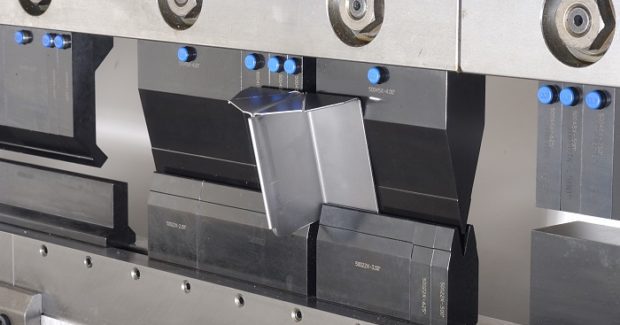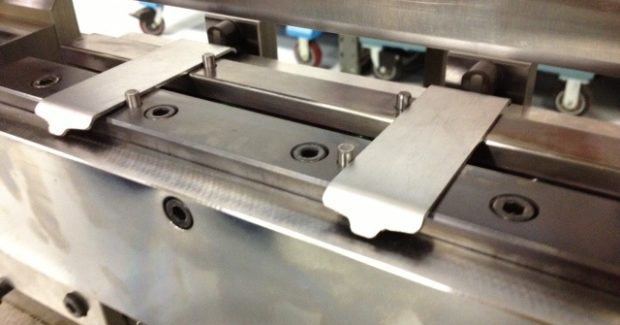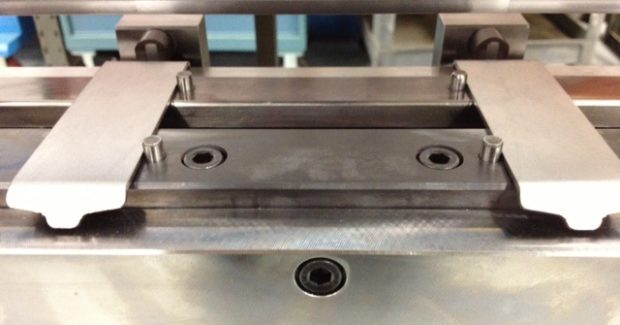Why Invest in Custom Press Brake Tooling?
Are you facing a complex bending challenge, a unique part design or press brake productivity dilemma? If so, it’s time to consider investing in custom press brake tooling now that can pay off in spades down the road through increased bending performance and improved part quality.
Posted: February 6, 2018
Deciding whether or not to invest in special tooling for a particular job is likely to give any fabricator pause. While it’s true that custom press brake tooling can be more expensive and may require a bit more lead-time than standard tooling, there are also significant benefits to investing in custom tooling over standard tool sets. Custom press brake tooling, or specials, make it possible to solve challenging bending and forming applications while reducing material handling, minimizing setup time and improving the quality of parts. Working with a tooling manufacturer to determine the best way to form a part can result in a positive ROI in terms of increased productivity and fewer bad parts. Whether you are faced with a unique part design, need to simplify a complex bend or improve press brake performance, tooling manufacturers have the experience and knowledge to help you determine the best way to make a part.
Tooling manufacturers also understand there’s more to improving press brake performance than simply reducing the amount of time or number of strokes it takes to form a part. For example, consider the process for forming a channel. With a standard punch and die set, forming a channel requires two strokes of the machine. Whereas, using a custom channel tool, it’s possible to produce two bends in one stroke. While this certainly reduces the amount of time it takes to produce a part, the added benefit to choosing a channel tool set is the consistency gained in the finished part. Because the part is now produced in a single stroke, it only needs to be gauged or located once rather than twice. Every time a part needs to be repositioned, re-gauged or relocated is an opportunity for something to go wrong, increasing the likelihood of producing a bad part.
Additionally, many custom or special tools include integrated gauging or nesting to properly locate the part prior to forming – resulting in fewer bad parts that either become scrap or need to be reworked. In this case, choosing a custom channel tool over a standard punch and die set provides significant returns through reduced setup and run times as well as the quality of the finished part.
Another situation in which a custom tool set may be warranted is when multiple tools are required to form a complicated part. If these tools are not “timed out” (staged to a common shut height) then the machine must be retooled between operations. In cases such as this, great efficiencies can be gained when multiple tool setups can be loaded in the press brake at the same time. By creating a custom tool set that will “time out” with other tools, more bending operations can be performed before the machine needs to be retooled – thus minimizing setup time as well as part handling. For instance, if a custom channel tool can be timed out with a custom offset form the operator needs to handle the part only once for it to be completely formed. The alternative is to form lots of channels, setting all those parts aside, retooling the machine, and then forming the offset on each of the parts.
Of course, the more complex the part (those requiring more bends and more tooling) the ability to improve press brake productivity increases exponentially with each tool set that can be customized to a common shut height. Common applications for special tooling include channels, curls/hinges, gussets, heavy plate, hemming, louvers, large radius, multiple radius, emboss/letter stamps, card guide, and punch tooling holders. Whatever your application, an experienced tooling manufacturer can take your part information, drawings, designs or CAD files and recommend the right custom tooling for the job. The design process may also include a request for more information about the part being produced, the application and even the press brake machine. In most cases, the tooling manufacturer will send final design drawings for review and approval. This step helps ensure that the custom tooling will work as expected and prevent the need for costly lost production time and rework upon receipt.
So the next time you are faced with a complex bending challenge, whether it be a unique part design or press brake productivity dilemma, consider leaning on the expertise and ingenuity of your tooling manufacturer. Investing in custom press brake tooling now can pay off in spades down the road through increased bending performance and improved part quality.








